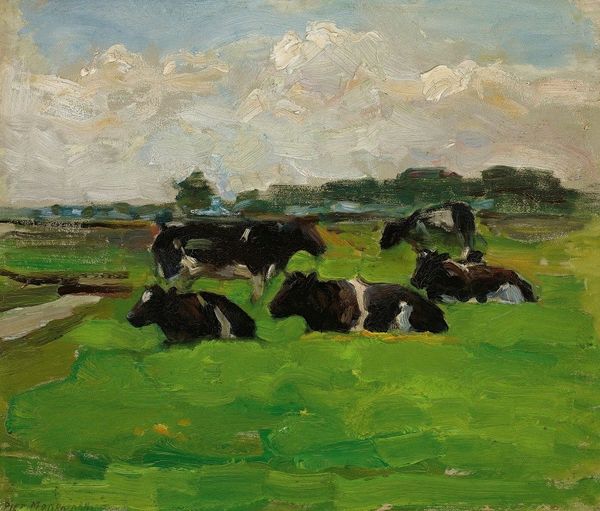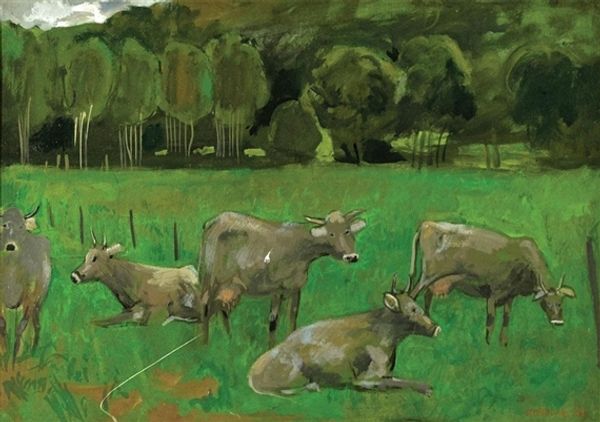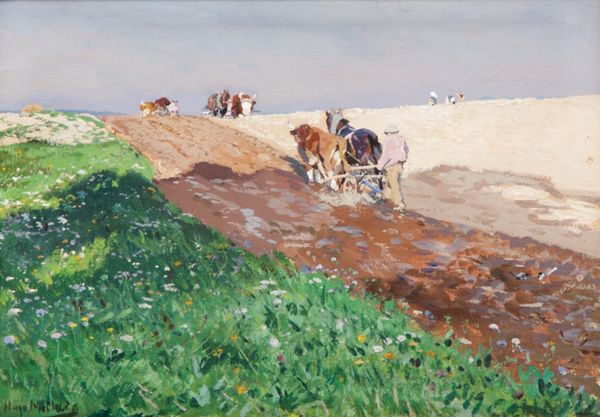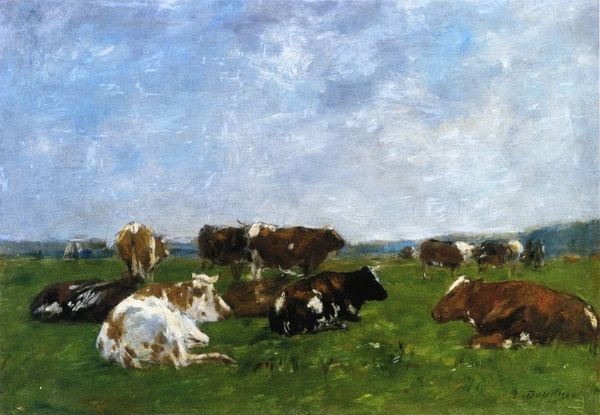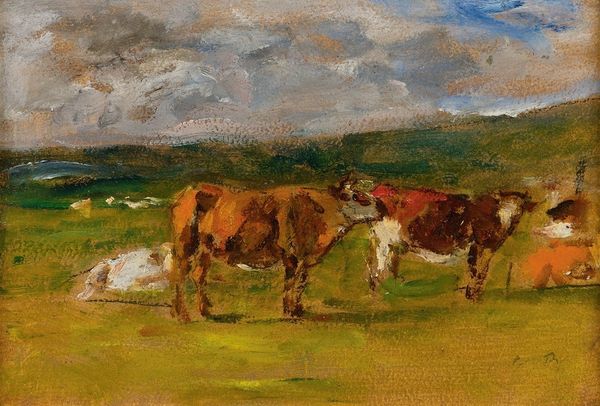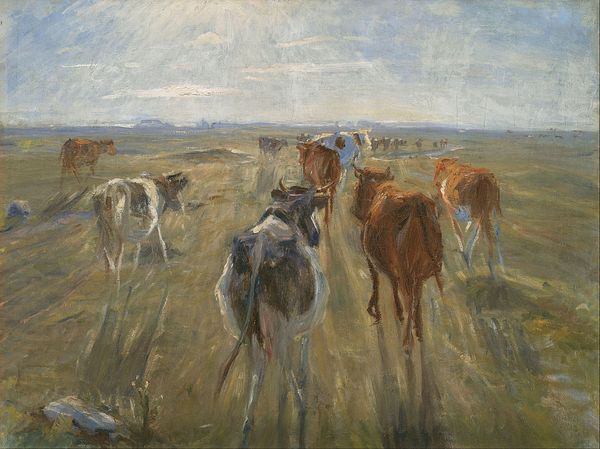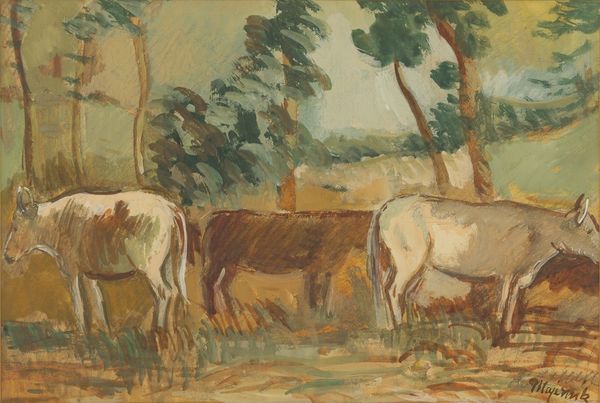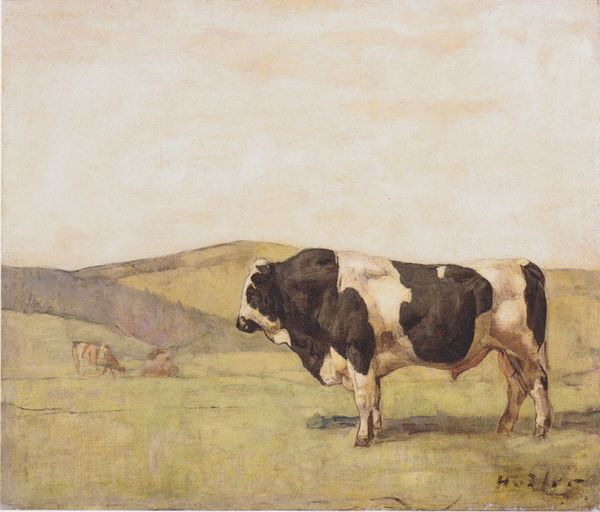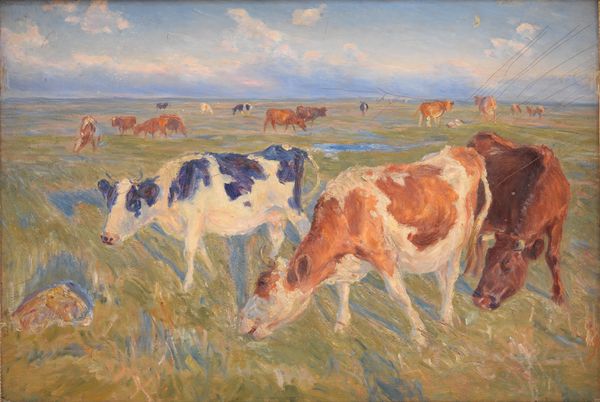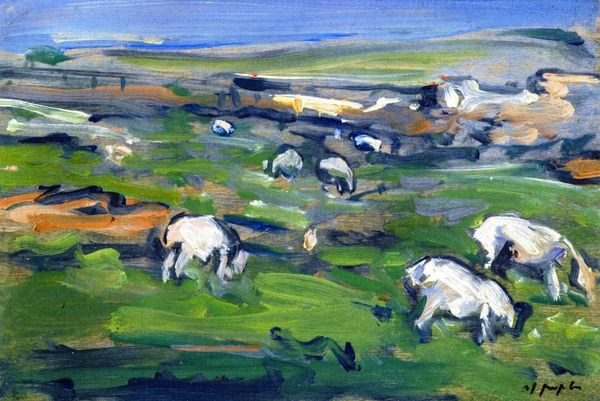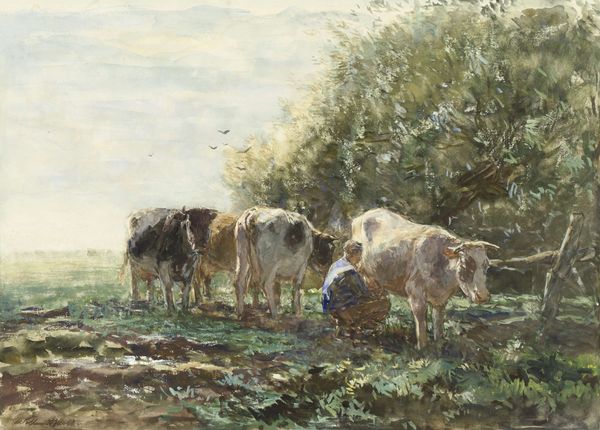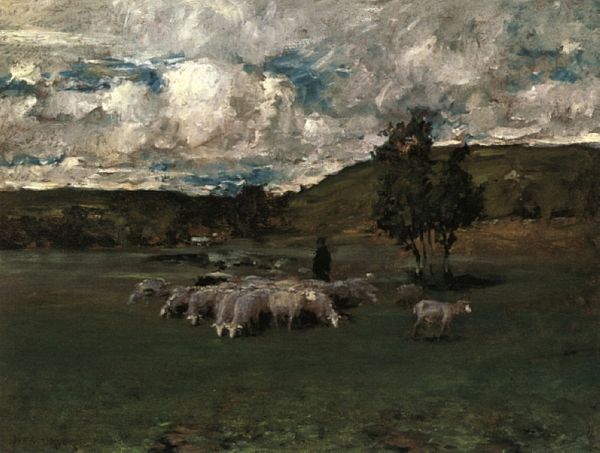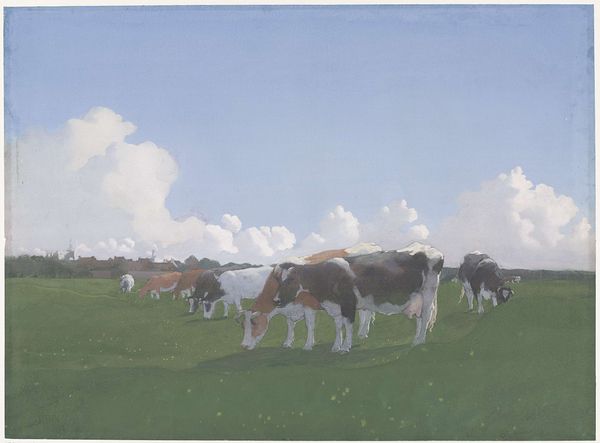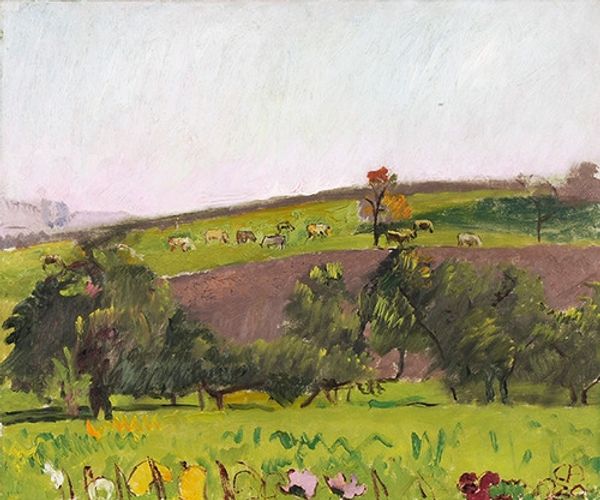
painting, oil-paint
#
painting
#
impressionism
#
oil-paint
#
landscape
#
impressionist landscape
#
oil painting
#
folk-art
Copyright: Public domain
Curator: This oil painting is entitled “Nagybányai Hegyek”, or "Mountains of Nagybánya," attributed to Ferenczy Károly. What are your initial thoughts on viewing this landscape? Editor: An oppressive, dull light—the cows beyond the fence seem almost spectral against that sky. There's a rough-hewn quality to it all, even the grass. Curator: Yes, Ferenczy utilizes Impressionistic brushstrokes to capture a transient moment. Notice the atmospheric perspective, how the colors subtly shift towards the horizon. Editor: But the very choice of oil on canvas, here used so loosely, almost haphazardly, strikes me. Why immortalize what appears to be just ordinary farmland in what's regarded as a precious medium? Where did Ferenczy get the paint, canvas? Who prepared them? Curator: You raise important considerations of access and artistic intention. The artist likely intended to elevate a mundane subject, examining light effects and tonal relations to find beauty in the ordinary. Note the horizon line—it bisects the canvas, creating a classical balance, almost diagrammatic. Editor: "Beauty" assumes an idealized view. It's the reality that grabs me—this feels more akin to rural poverty, with its hand-built fences, and simple labor. We can ask, what are the conditions and effects of animal agriculture during the Industrial revolution on landscape, animals, people and the division of labor between genders. What do we learn here? What isn't visualized in terms of labor and distribution? Curator: Interesting observation! Ferenczy does use a limited palette—earthy greens, browns, and whites dominate—further contributing to this sombre tone. Editor: These are not pigments created for high decorative art! This subdued palette probably had regional origins tied to local materials, as well as practical and financial aspects of how folk materials were transformed into landscape painting, a cultural product meant for visual consumption. Curator: That invites a reconsideration of value, doesn't it? By giving primacy to color and form, perhaps we begin to see it in a new way. Editor: Maybe. It forces me to consider not just what's depicted, but *how* it's made and from where the materials emerged, and ultimately for whom? Curator: A necessary provocation, thank you! Editor: Likewise! There's always so much beneath the visible surface.
Comments
No comments
Be the first to comment and join the conversation on the ultimate creative platform.
